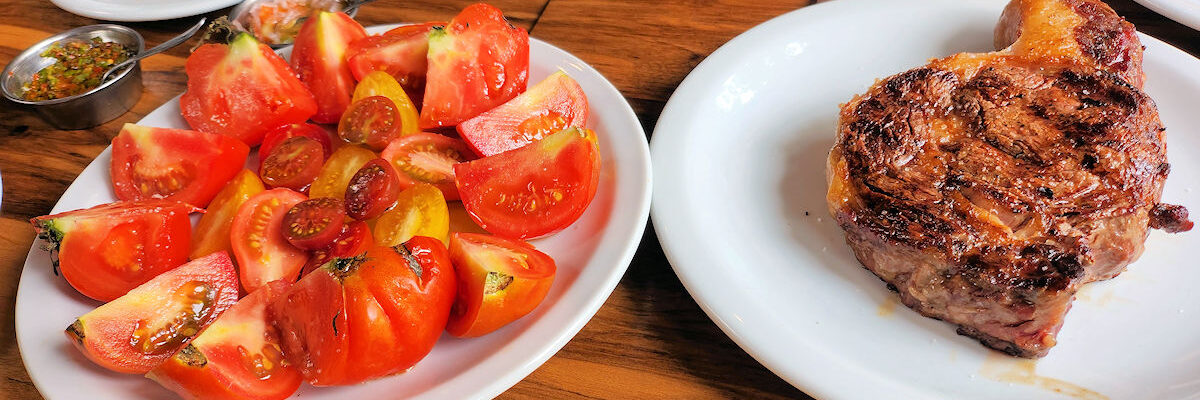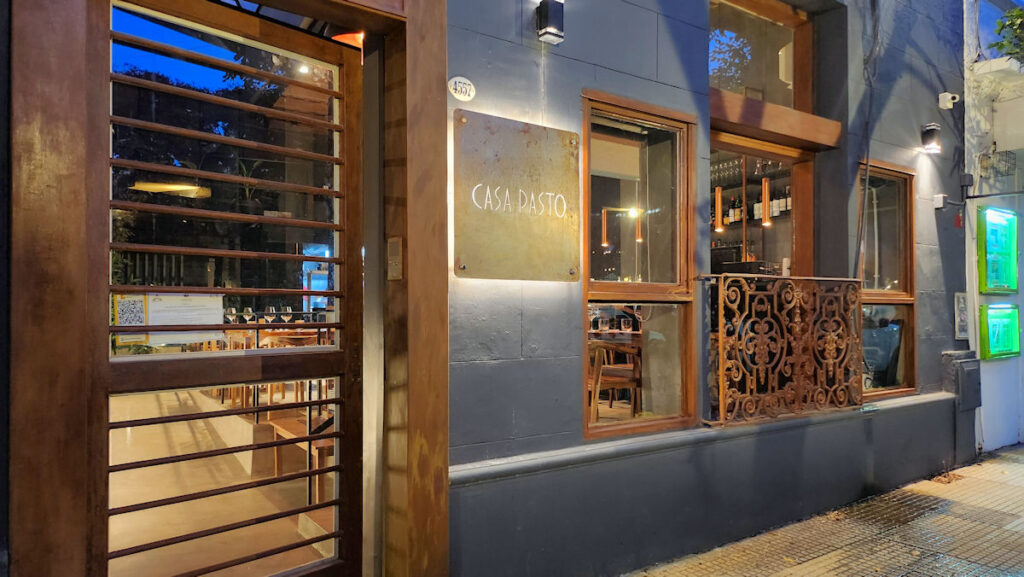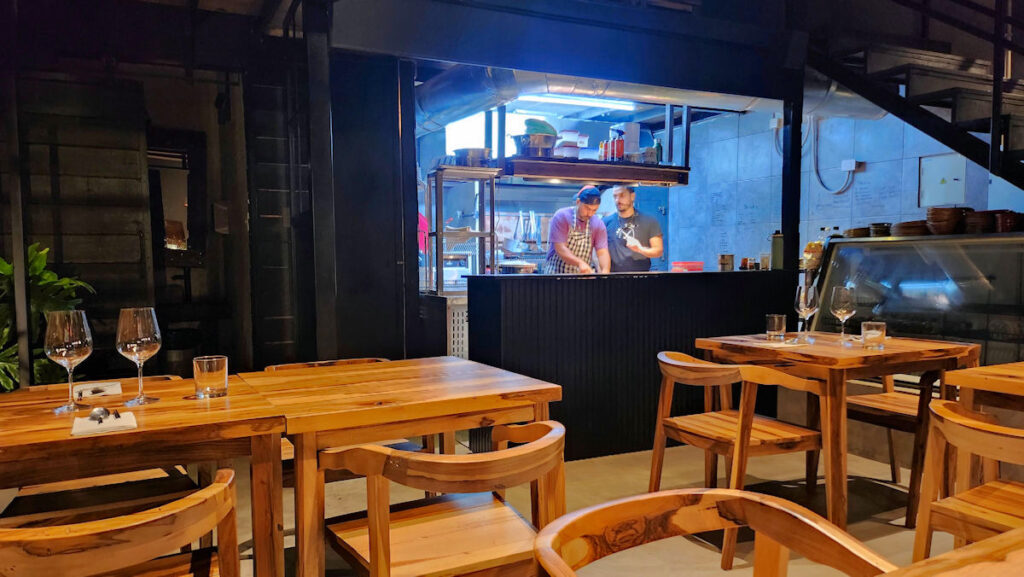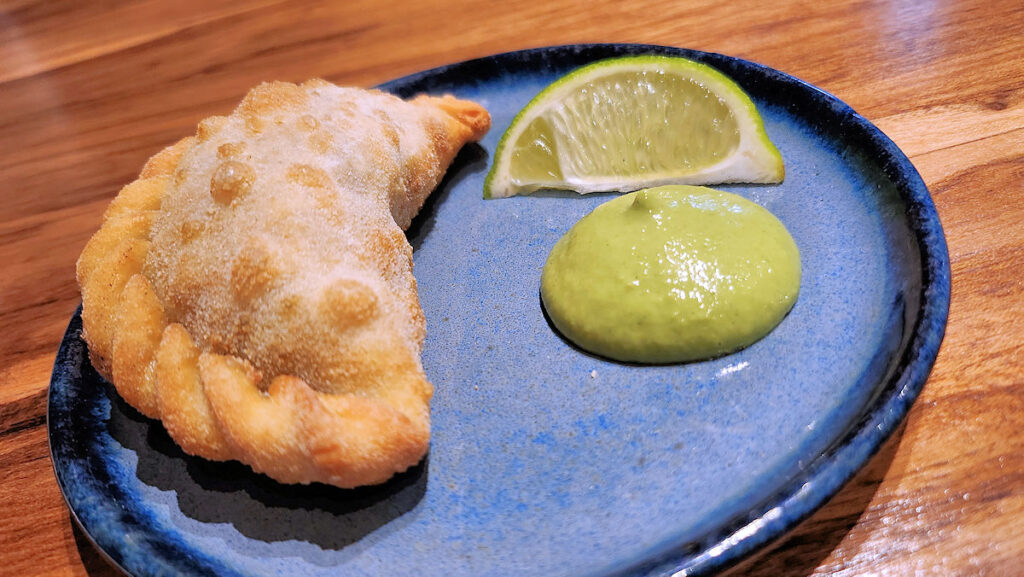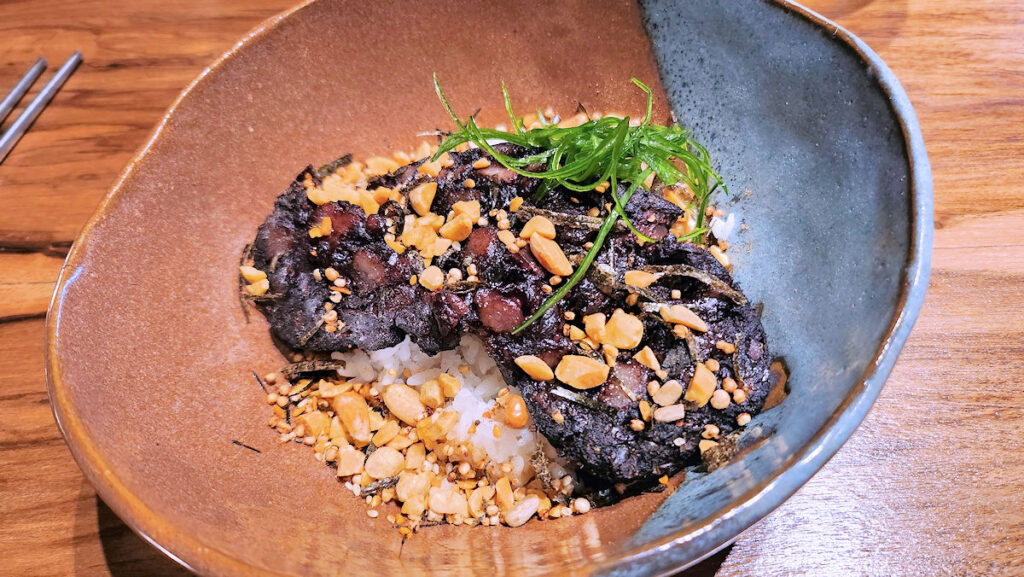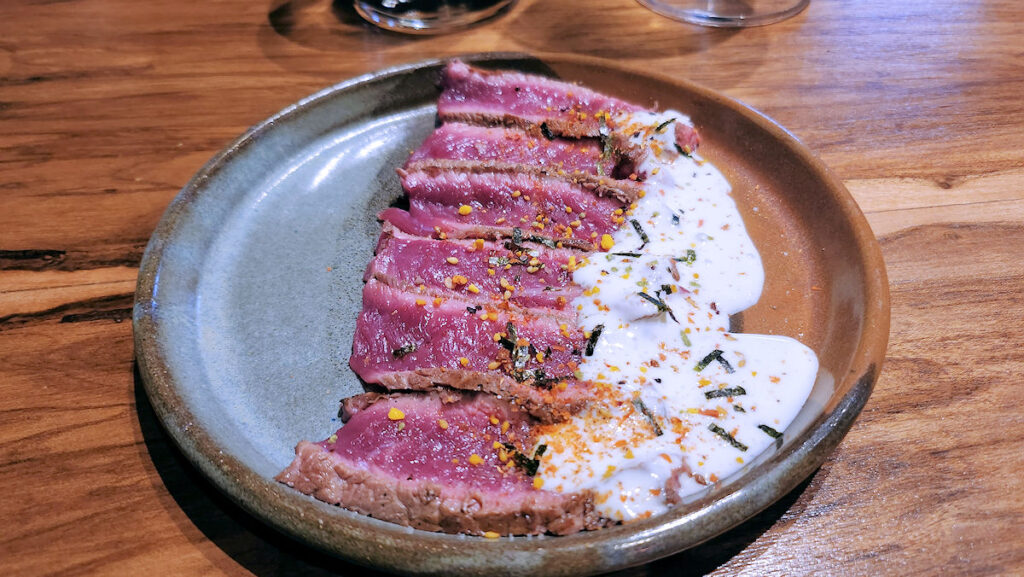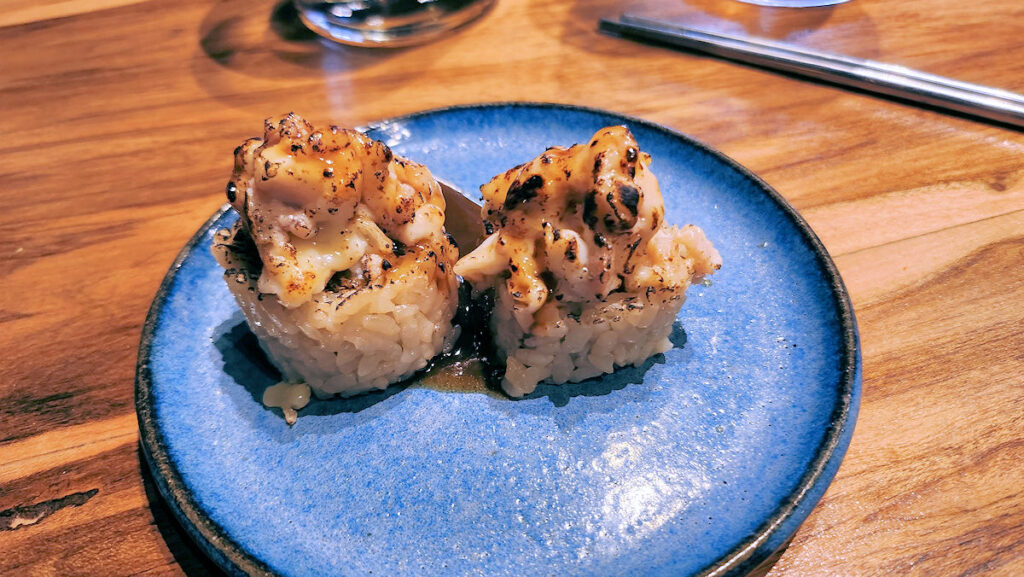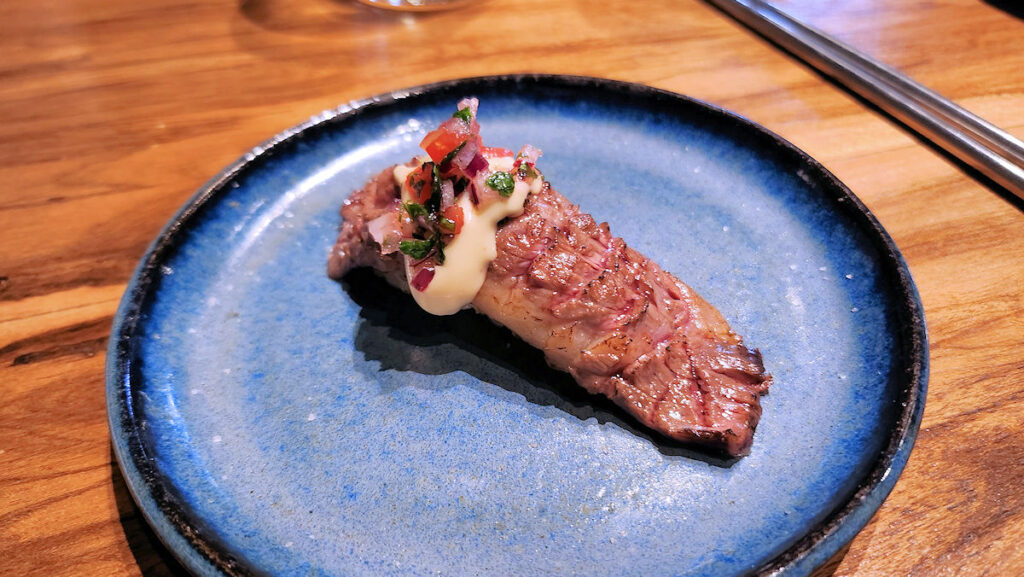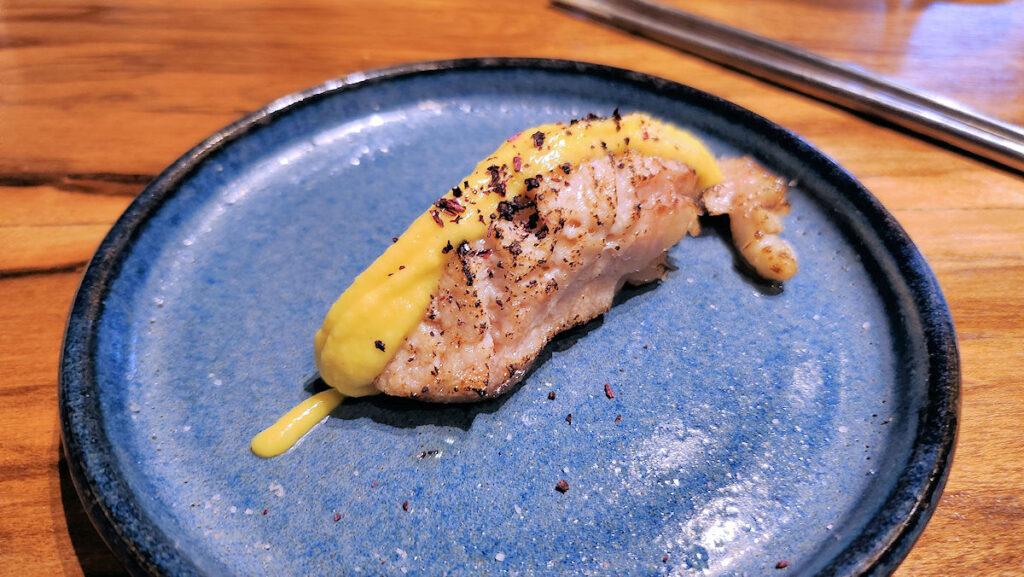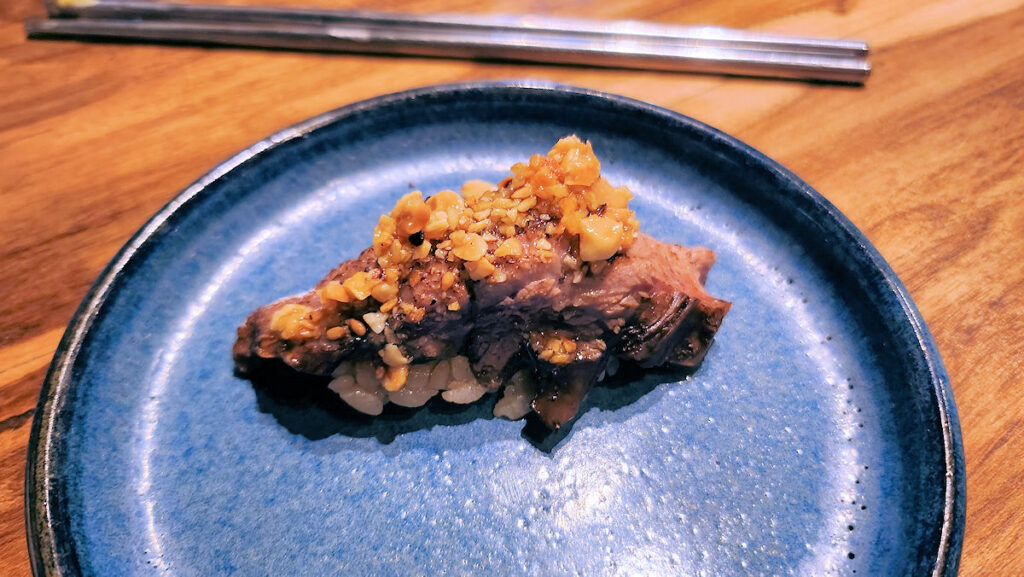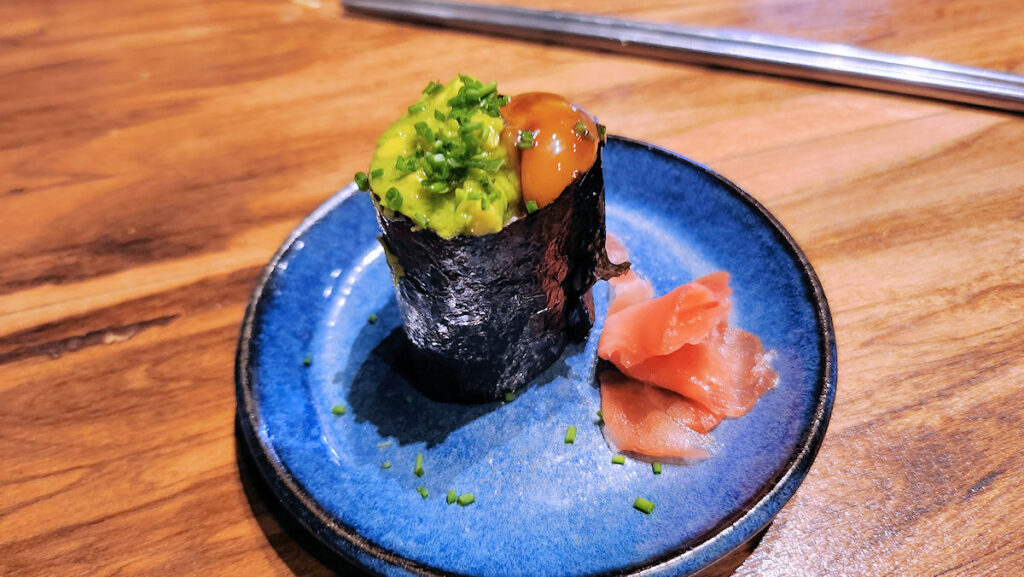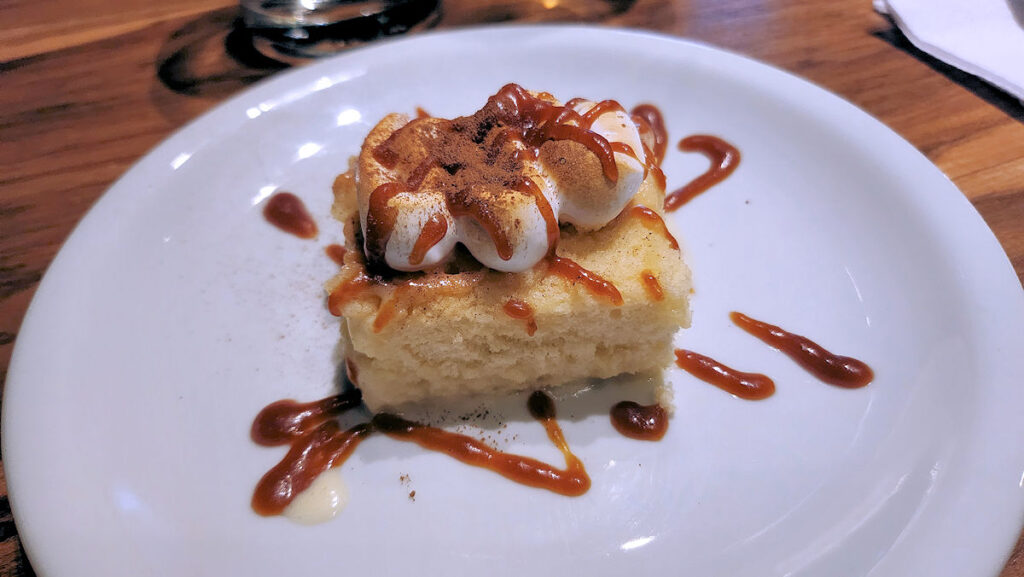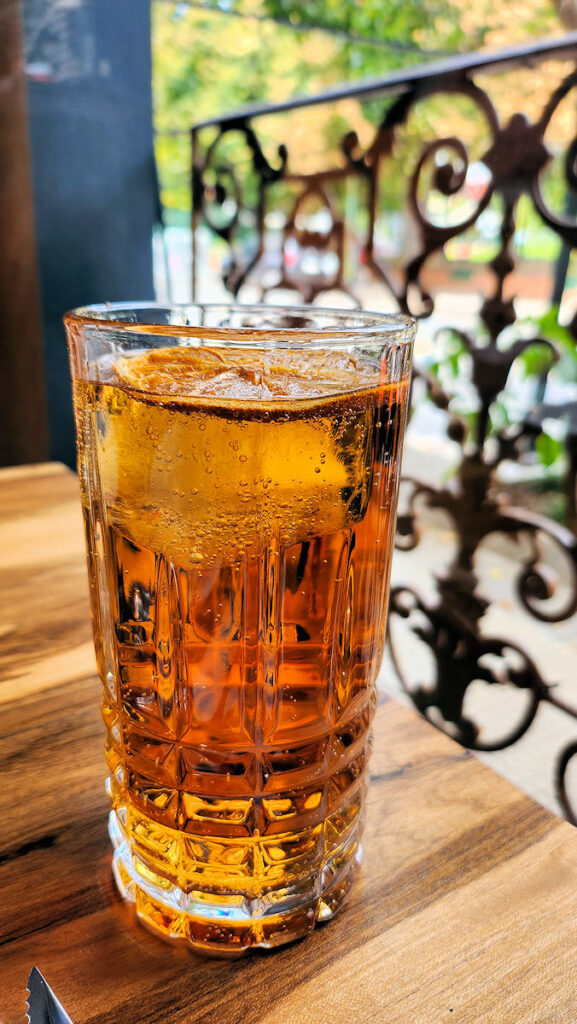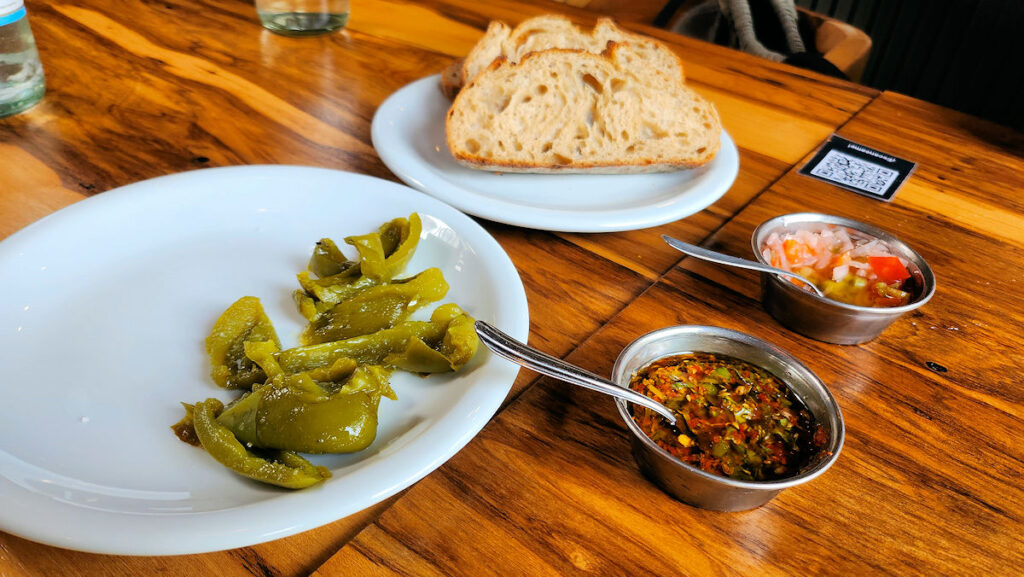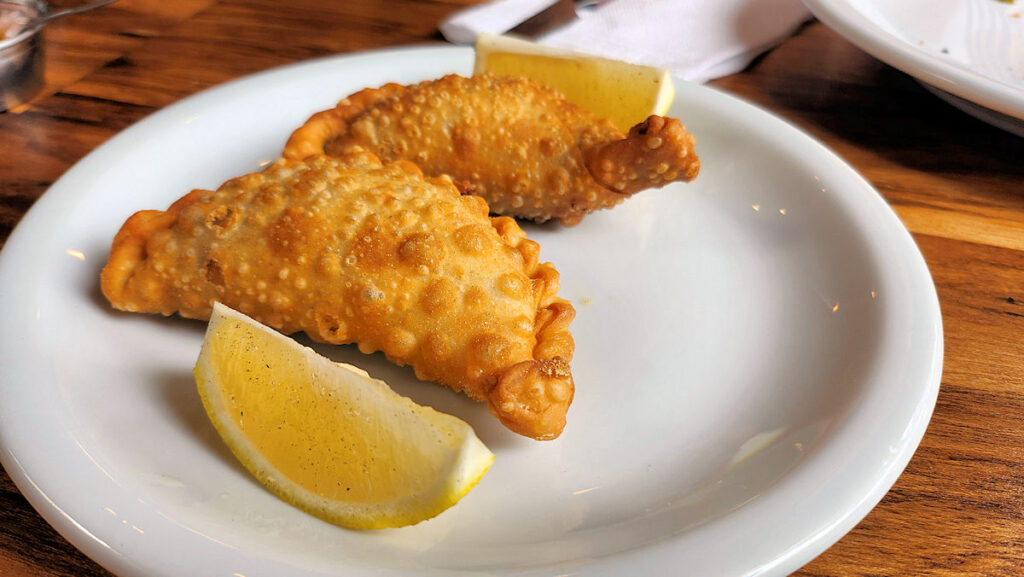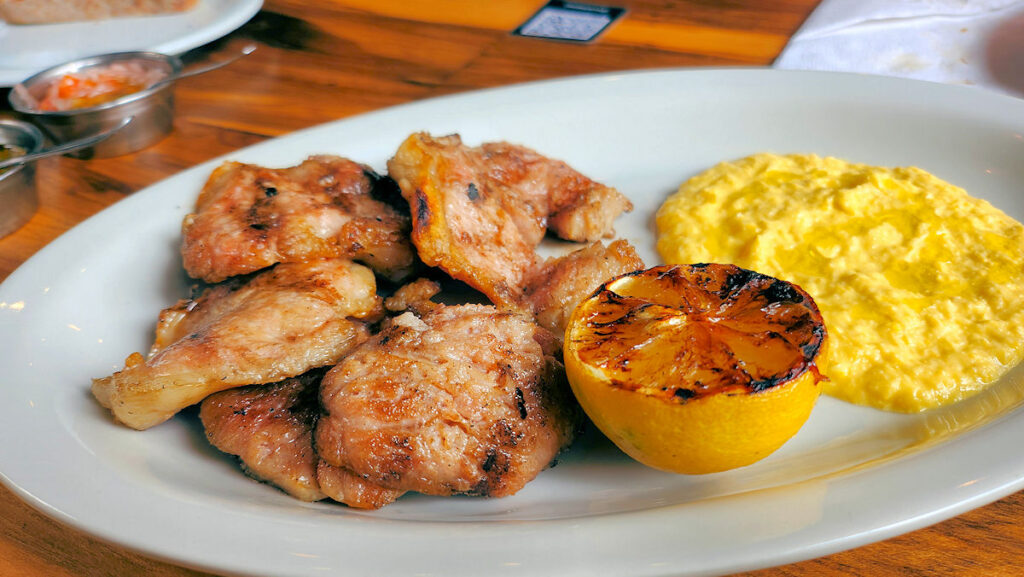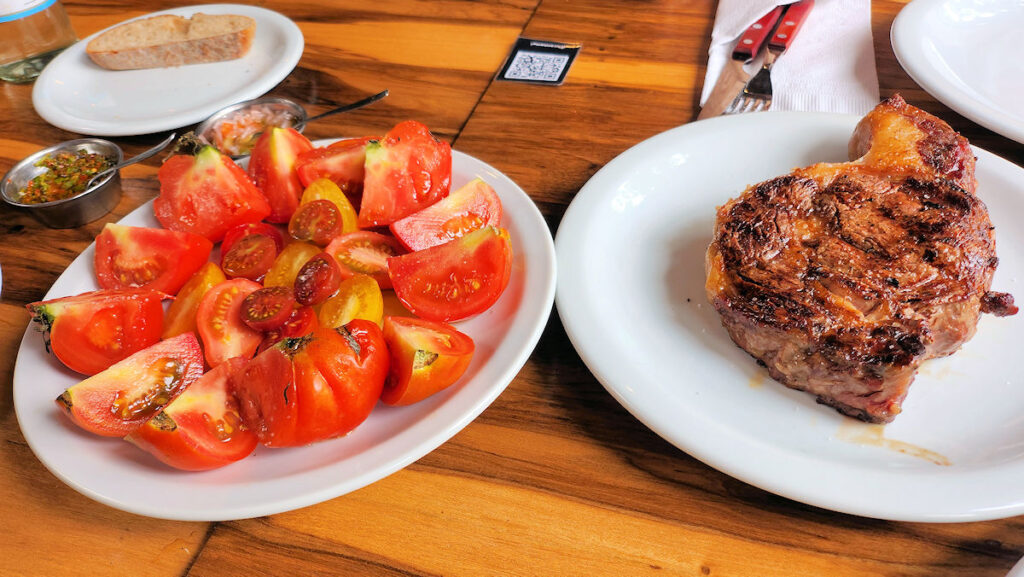Janus was the Roman god of doors, gates, passages, beginnings, transitions, and time. But also, the middle ground between concrete and abstract dualities such as life/death, beginning/end, youth/adulthood, rural/urban, war/peace, and barbarism/civilization. When I read about the concept behind Casa Pasto, Nicaragua 4557, Palermo (to one side of Plaza Armenia), my first thought was a sort of Jekyll and Hyde situation, but those are too opposite, without enough middle ground. Janus fits perfectly the overlapping dichotomy of this steakhouse.
On weekends, from noon to midnight, the place functions as a steakhouse. They only work with meat from grass fed cattle, and only organic produce. Chef Nacho Bravo (I know, to English-centric ears, that sounds made-up, and probably a masked Mexican wrestler) is known primarily for being an asado caterer (coming to your home and creating a backyard cookout for you), and local YouTube star, with his own show where he interviews well known, and not so well known, local chefs.
So here’s the dichotomy part of the story. On Wednesday and Friday evenings, they offer an omakase menu. Not a tasting menu, mind you, like we saw recently at Fogon Asado, but a Japanese influenced sushi type omakase co-led by Nacho, and Uriel Hendler, the sushiman behind Kanu sushi (which, in looking back, I was not fond of) and Let it V (a vegetarian sushi delivery service). My first foray was for this experience, which sounded intriguing – a grilled meat sushi bar.
The seven course menu starts with bottled water and an included cocktail. There are choices in the latter, as well as the substitution of a beer or glass of wine, or even a creative mixture of soft drinks. Service is… enthusiastic, and maybe a touch overly friendly. I don’t know these people but they’re calling me by my first name, a lot, which just feels odd in a restaurant setting – it might actually be that the server and bartender were saying my name at the start of almost every sentence that was weird. Anyway, the food starts with a surf and turf empanada with a tasty mix of calamari and beef, accompanied by a vibrant huacatay (Amazon black mint) sauce. Nice start. Not very Japanese, though in post-dining research, I find that chef Nacho is very fond of Peruvian cooking and ingredients.
This is a huge portion for a tasting menu – and it turns out that it’s the serving size for two people – they’re not geared towards making one person portions. It’s a slightly crispy broiled slice of morcilla sausage over rice, and with a nut-based furikake mixture. It’s fantastic, actually one of my two favorite courses, but now knowing that some of the plates are going to be large, I only eat a little over half of it.
A bife de chorizo, tenderloin, tataki. Quickly seared and left raw in the middle, it’s served with alioli (the Spanish name for aioli), merquén (Chilean smoked chili flakes), and a more classic furikake with alge and seeds. Good, but not a wow – the alioli was just too acidic. And again, a portion for two, so I only ate half.
My least favorite course – two slices of a maki, sushi roll, with prawn and avocado inside, and a tartare of sweetbreads, scallops, and parmesan atop. This one just plain didn’t work for me. The tartare on top was interesting, but the whole thing just didn’t come together.
A hanger steak nigiri. I wish I could remember the little toppings on the series of nigiris but, I didn’t take notes. I was quite good, I can tell you that – in fact all three nigiri in this sequence were excellent.
This was my surprise favorite. A torched sweetbread with, if I recall, a yellow chili sauce. Absolutely wonderful.
And on to a rib-eye cap nigiri with nuts that I liked quite a bit.
Presented as “this is my favorite” by chef Uriel, a gunkan of sweetbread (they do like their sweetbreads – they appear in three of the courses – and no objections from me) avocado, and quail egg. Good, but we already know my favorite.
I’ve said it before, I’m not a dessert person. And Argentine desserts, in general, tend to be way too sweet for me. No exception here with a very coconut-y tres leches cake that other than the coconut flavoring might well have been a block of sugar. I’ll pass on that.
Overall, I like the space. Service is really well thought out, though perhaps the enthusiasm and familiarity could be dialed back a touch. The food, with one exception, very good to excellent. The two negatives – it’s a lot of meat. Which makes for a heavy omakase. Then again, I’m not a big eater at night – which is why most of my going out tends to be around lunchtime – so maybe it’s me. Though the second negative – figure out how to handle odd numbered parties. Sending out portions for two for solo diners, or for four for threesomes, is a tad intimidating on the customer end, and potentially wasteful on the kitchen end. All pretty damned reasonable at 35,000 pesos plus tip, or around $36.
I also find myself wondering how a restaurant using this caliber of product and survive on only being open four days a week, in one of the busiest parts of Palermo.
A return visit to see the other face of this parrilla was in order, and a friend and I headed there this weekend. As a “regular” parrilla, the place is open from noon to midnight (without closing between lunch and dinner!) on Saturdays and Sundays. We reserved for 1pm, and surprisingly, we were the only customers the entire time we were there. Our waitress assured us that it would get busy around 3 or 4 in the afternoon, after people woke up from their previous night revelries, and headed out for a classic mid-afternoon weekend meat binge.
A couple of proper vermouth and sodas to wet the whistle.
Excellent bread, the salsa criolla and the chimichurri were very good too. We liked the idea of the roasted green bell peppers to adorn the bread, but given that the bread is served hot, why are the peppers served refrigerator cold? Warm them up!
A couple of those very good empanadas are brought “on the house” for everyone. It’s a bit of a misnomer, though not far off, as Casa Pasto charges the dread cubierto to cover bread and “gifts” to the table, albeit an extremely inexpensive cubierto at a mere 500 pesos per person. In truth, these days, that probably barely covers the condiments.
We are forewarned that all plates are basically two-person shareable. So we decide to start by splitting an order of mollejas, sweetbreads. They are perfectly cooked – golden on the outside and still just barely pink on the inside. It does seem a bit pricey for the quantity, but we also remind ourselves that Casa Pasto only works with organically fed, pasture raised animals, so those tend to cost more than most of what we get in our neighborhood markets. We like the idea of the humita, the corn puree, on the side, and it is tasty, but again, it’s served ice cold rather than warmed to go with the organ meats. Why? It’s a bit jarring and we end up eating them separately – besides, the mollejas are at their best with a little of that chimichurri on them.
And, on to a main course. A perfectly rare to medium rare rib-eye steak, tender as butter, and properly seasoned, is one of the best ones I’ve had in a long time. The mixed tomato salad is a bit overwhelming in size, and we only make it through maybe 2/3 of it. We both note it’s a little odd to not core the stems out of the bigger tomatoes, forcing us to do it ourselves. The tomatoes are fresh, ripe, and juicy – they’re served basically unadorned – maybe a hint of salt, but we add salt and pepper. A bottle of top quality (organic of course) olive oil would not be out of place here…. Just a suggestion.
Overall, I really like this place. For me, personally, while I found the omakase fascinating, it felt like too much. Then again, that’s partially the whole serving a portion for two to a single diner. And, while a couple of those pieces, like the broiled morcilla rice and sweetbread nigiri, I’d happily eat again and again, I’m more likely to go back for a perfectly cooked steak and side dish. Highly recommended.
